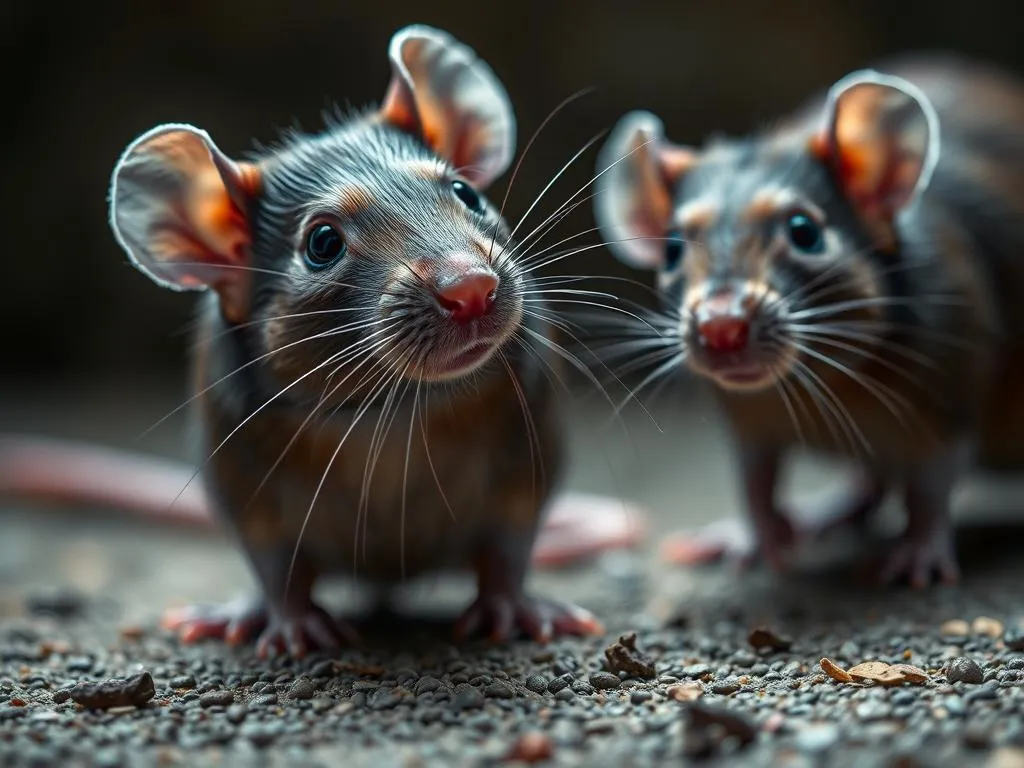
Introduction
Have you ever wondered how the intelligence of different animals stacks up against one another? While dogs have long been celebrated as “man’s best friend,” a lesser-known competitor in the realm of animal intelligence is the humble rat. Are rats smarter than dogs? This fascinating question invites us to delve into the intricacies of animal intelligence and understanding what it truly means.
Intelligence in animals can be defined in various ways, encompassing cognitive abilities, problem-solving skills, social intelligence, and learning capacity. By examining these facets, we can better understand the capabilities of both rats and dogs.
The purpose of this article is to explore the intelligence of rats and dogs, investigating the unique characteristics of each species and how they compare in terms of cognitive abilities and social interactions. Ultimately, we aim to answer the question: Are rats smarter than dogs?
Understanding Animal Intelligence
Defining Intelligence in Animals
Intelligence is a multi-faceted trait that encompasses several key areas:
- Cognitive Abilities: This includes memory, reasoning, and the ability to learn from experience.
- Problem-Solving Skills: The capability to navigate challenges and find solutions is a significant indicator of intelligence.
- Social Intelligence: How well an animal interacts with others, understands social structures, and communicates can also be indicative of its intelligence.
- Learning Capacity: The ability to acquire new skills and knowledge over time is a critical aspect of intelligence.
Methods of Measuring Intelligence
To gauge intelligence in animals, researchers employ various methods:
- Behavioral Tests: These tests challenge animals to solve puzzles or navigate mazes to measure their problem-solving skills.
- Brain Structure and Size: Studies often look at brain size relative to body size, as well as the complexity of the brain structures involved in learning and memory.
- Adaptability and Survival Skills: The ability of animals to adapt to changing environments and develop innovative solutions to survival challenges is a hallmark of intelligence.
Overview of Rats
Biological and Behavioral Characteristics
Rats are fascinating creatures with unique biological and behavioral traits:
- Physical Attributes: Rats possess sharp senses, especially smell and hearing, which aid their survival.
- Social Structure and Hierarchy: They live in social groups with complex hierarchies, demonstrating their social nature.
- Natural Behaviors in the Wild: In their natural habitats, rats exhibit behaviors like foraging, nesting, and communication through vocalizations and body language.
Intelligence in Rats
Rats have shown remarkable intelligence through various studies:
- Problem-Solving Abilities: They excel in maze tests and puzzles, often demonstrating innovative solutions to reach their goals.
- Memory and Learning Capacity: Rats have excellent memories and can learn from their experiences, a trait that is often tested in lab settings.
- Social Learning and Cooperation: These animals often learn from one another, showcasing their ability to work together and adapt based on social interactions.
Notable Research Studies on Rat Intelligence
Several key experiments have highlighted the intelligence of rats:
- Studies have shown that rats can navigate complex mazes and remember the routes over time, demonstrating both spatial awareness and memory.
- Research has revealed that rats can understand and cooperate in tasks requiring teamwork, often outperforming expectations in social learning scenarios.
Overview of Dogs
Biological and Behavioral Characteristics
Dogs, often referred to as humans’ best companions, exhibit their own unique characteristics:
- Physical Attributes: Dogs come in various shapes and sizes, with keen senses that make them excellent companions and working animals.
- Social Structure and Pack Behavior: Dogs are pack animals, displaying strong social bonds and hierarchies that affect their interactions.
- Natural Instincts and Roles: Many dogs have specific roles, such as herding or guarding, which showcase their intelligence and adaptability to human needs.
Intelligence in Dogs
Dogs possess remarkable intelligence characterized by:
- Obedience and Training Capabilities: They can be trained to perform a variety of tasks, often responding well to commands and cues.
- Social Intelligence and Communication with Humans: Dogs have an exceptional ability to read human emotions, making them highly empathetic companions.
- Emotional Intelligence: They can discern human cues and respond appropriately, showcasing their understanding of human emotions.
Notable Research Studies on Dog Intelligence
Research studies have illustrated the intelligence of dogs in several ways:
- Studies demonstrate that dogs can learn hundreds of words and commands, often remembering them over long periods.
- Research has shown that dogs can interpret human gestures and vocal cues, which indicates a high level of social intelligence.
Comparative Analysis: Rats vs. Dogs
Cognitive Abilities
When it comes to cognitive abilities, both species showcase unique strengths:
- Problem-Solving: Rats often excel in problem-solving tasks, showing creativity in navigating mazes. However, dogs’ ability to follow human commands may indicate a different type of cognitive strength.
- Learning Styles and Retention: Rats demonstrate strong retention in memory tasks, while dogs show an impressive capacity for learning through positive reinforcement.
Social Intelligence
The social dynamics of both species reveal fascinating contrasts:
- Interactions with Peers: Rats exhibit complex social structures and can cooperate with one another, while dogs are adept at forming bonds with humans and understanding social cues.
- Understanding and Responding to Social Cues: Dogs possess a remarkable ability to read human emotions, which is less pronounced in rats, despite their own social learning capabilities.
Adaptability and Environmental Interaction
Both rats and dogs adapt well to their environments, yet they do so in different ways:
- Adaptation to Changes: Rats are highly adaptable creatures, often adjusting their behaviors to find food and avoid predators. Dogs, on the other hand, have been bred for specific tasks, showcasing adaptability to human environments.
- Survival Skills and Innovation in Problem-Solving: Rats are known for their innovative problem-solving skills in the wild, while dogs display learned behaviors that enable them to thrive in domesticated settings.
The Role of Training and Environment
Impact of Human Interaction
The influence of human interaction cannot be understated:
- How Domestication Affects Intelligence: Domestication has shaped the intelligence of both species, with dogs often being trained for specific roles alongside humans, while rats have retained more of their wild instincts.
- Training Methods for Both Species: Training techniques vary greatly; dogs are often trained through positive reinforcement, while rats are trained using different methodologies that emphasize problem-solving.
Environmental Factors
The environment plays a crucial role in shaping intelligence:
- Effect of Enriched Environments: Both rats and dogs benefit from enriched environments that stimulate learning. Rats, in particular, thrive in settings that encourage exploration and problem-solving.
- Comparison of Living Conditions: The living conditions of domesticated animals can significantly influence their intelligence, with both species showing differences in learning and adaptation based on their environments.
Common Misconceptions
Cultural Perceptions of Rats and Dogs
Cultural views significantly impact our understanding of these two species:
- Societal Views on Rats and Dogs: Rats are often viewed as pests, while dogs hold a place as beloved companions. This societal bias can affect how we perceive their intelligence.
- Impact on Research and Understanding: Cultural perceptions may lead to a lack of research into rat intelligence compared to the extensive studies conducted on dogs.
Intelligence Misunderstandings
Misconceptions about animal intelligence abound:
- Myths About Animal Intelligence: There are many myths surrounding the capabilities of both species, often leading to an underestimation of rat intelligence.
- Clarifying Misconceptions: It’s essential to recognize that both species exhibit unique forms of intelligence that are adapted to their environments and roles.
Conclusion
In summary, the comparison between rats and dogs reveals a complex landscape of animal intelligence. Both species exhibit remarkable cognitive abilities, with rats showcasing exceptional problem-solving skills and dogs demonstrating a profound understanding of human social cues.
Ultimately, the question of whether rats are smarter than dogs may not have a definitive answer, as intelligence manifests differently in each species based on their environments and social structures. Both rats and dogs contribute to our understanding of animal intelligence and serve as reminders of the diverse forms of intelligence in the animal kingdom. Embracing this complexity can lead to a deeper appreciation of our animal companions, regardless of their species.









